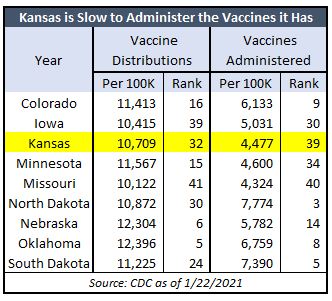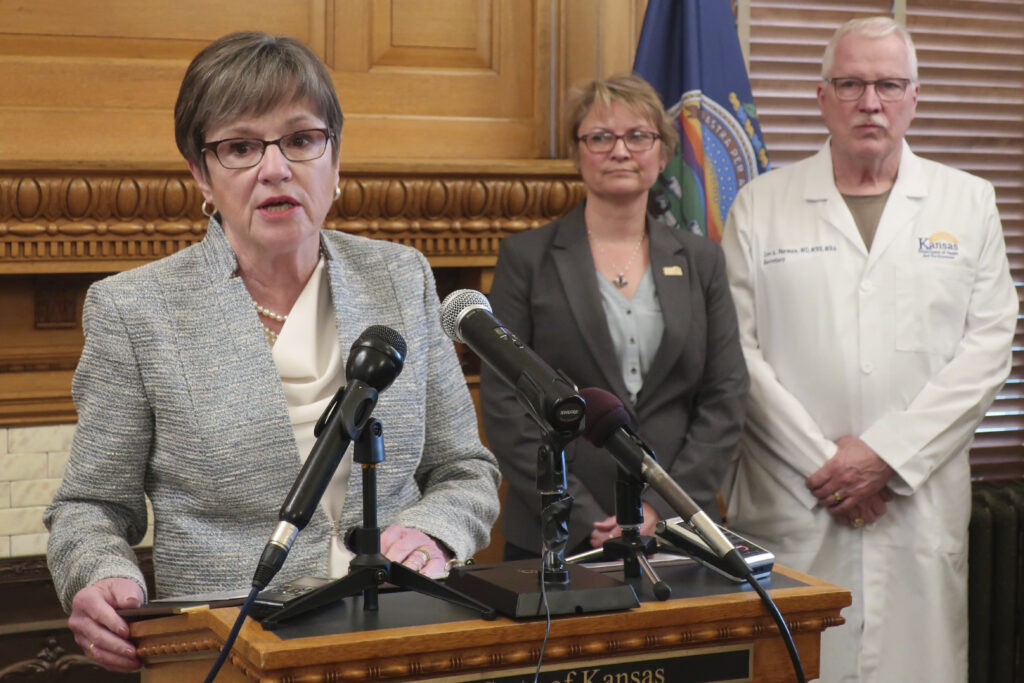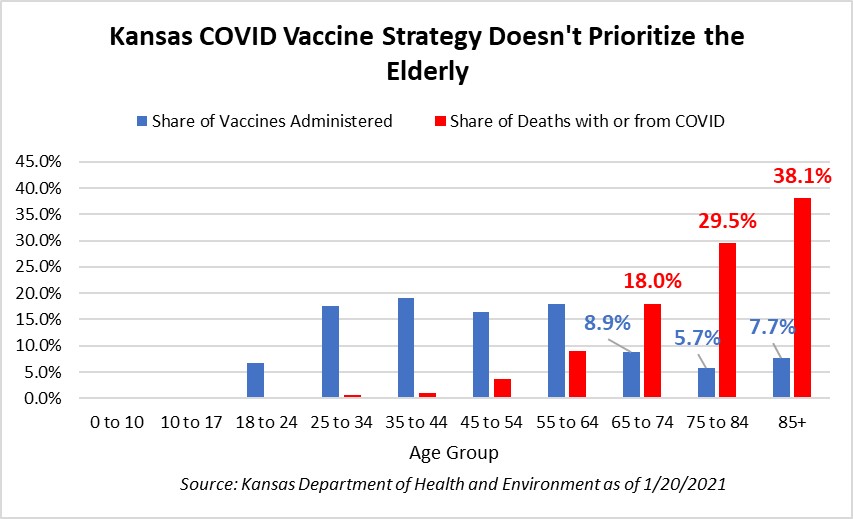The Kansas government’s COVID vaccine strategy has many problems. From poor communication to a lack of data transparency, the buck should stop at Governor Kelly. In addressing these issues Gov. Kelly has laid blame on nearly all of the relevant stakeholders except one, the most important one, her administration.
Blaming Healthcare Workers
Earlier this month, legislators asked the administration why the Center for Disease Control (CDC) ranked Kansas last in COVID vaccinations. The Kansas Department of Health and Environment (KDHE) responded,
The state has seen delays in reporting when those doses go into arms, because many providers have not been trained in how to enter the information onto a federal database.
Additionally, the Kansas health secretary reiterated this claim saying hospitals were ill-equipped to administer the vaccines, and that “data entry wasn’t a priority.” Kansas received it’s first COVID vaccine the week of December 14th, and yet hospitals saw decreasing COVID hospitalization two weeks earlier. There’s little reason why KDHE could not prioritize “data entry” in the two weeks before, or for the month after, receiving the first vaccine. Of course, it is more important to actually administer the vaccines then update a database but as President Obama once said, “you’ve got to be able to walk and chew gum at the same time.”
Blaming the Federal Government
In her State of the State address, Governor Kelly noted the state has improved in administering the vaccine. However, Kelly said more Kansas vaccine administered depends on federal government shipments.
While our state initially experienced a reporting lag of vaccines administered, the CDC vaccine tracker is now showing that Kansas is in the top tier for vaccines administered per capita. We are working as quickly as we can to safely, efficiently deliver the vaccine to all Kansans. Much of our ability to distribute the vaccine is dependent on the federal government getting the vaccine to us.
It’s most certainly true that Kansas cannot put vaccines in arms if it does not have vaccines from the Feds. However, it does not explain Kansas’s problem in administering vaccines.
 In the adjacent table, the CDC notes Kansas has received more vaccines (distributions) than Iowa and yet has administered fewer vaccines. In fact, Kansas has the 32nd most vaccines from the Feds out of all states. But Kansas is also the 39th fastest state in administering vaccines. Kansas has 10,709 vaccines (per 100,000) but only administered 4,477 (per 100,000). The problem is not that Kansas is short of the vaccine but rather Kansas is slow to administer the doses it has.
In the adjacent table, the CDC notes Kansas has received more vaccines (distributions) than Iowa and yet has administered fewer vaccines. In fact, Kansas has the 32nd most vaccines from the Feds out of all states. But Kansas is also the 39th fastest state in administering vaccines. Kansas has 10,709 vaccines (per 100,000) but only administered 4,477 (per 100,000). The problem is not that Kansas is short of the vaccine but rather Kansas is slow to administer the doses it has.
Blaming Walgreens and CVS
When the joint Senate and House health committees questioned KDHE on the state’s slow COVID vaccine rollout to the elderly and nursing homes, the Secretary blamed Walgreens and CVS.
They’re the ones providing the vaccine to the long-term care facilities through contracts with the federal government, We’re not in the middle of that.
While true, the state is responsible for vaccinating the elderly in the general population as well as those in independent living centers. According to “Kansas Vaccination Phases,” Phase 1 contains the nursing home population. However, “Phase 2” has elderly Kansans in the general population. This means younger workers can use scarce COVID vaccines before the entire Kansas elderly population.
The graph above compares the age demographics of COVID deaths (red) and COVID vaccines (blue). The bulk of COVID deaths are not receiving the bulk of the vaccines. This is where Gov. Kelly’s vaccine priority comes into play. Yes, the state must ensure the vaccine is available to health care workers. However, it is clear Kansas lags in administering vaccines to the population most at-risk of dying with or from COVID. Kansas government is at risk of leaving too many elderly Kansans behind.
Indeed, much of the COVID pandemic is largely outside of the state’s control. However, what is under the state’s control is proper communication and management of local organizations to ensure maximum effectiveness. At some point, the administration must take responsibility for Kansas’ slow rollout.






